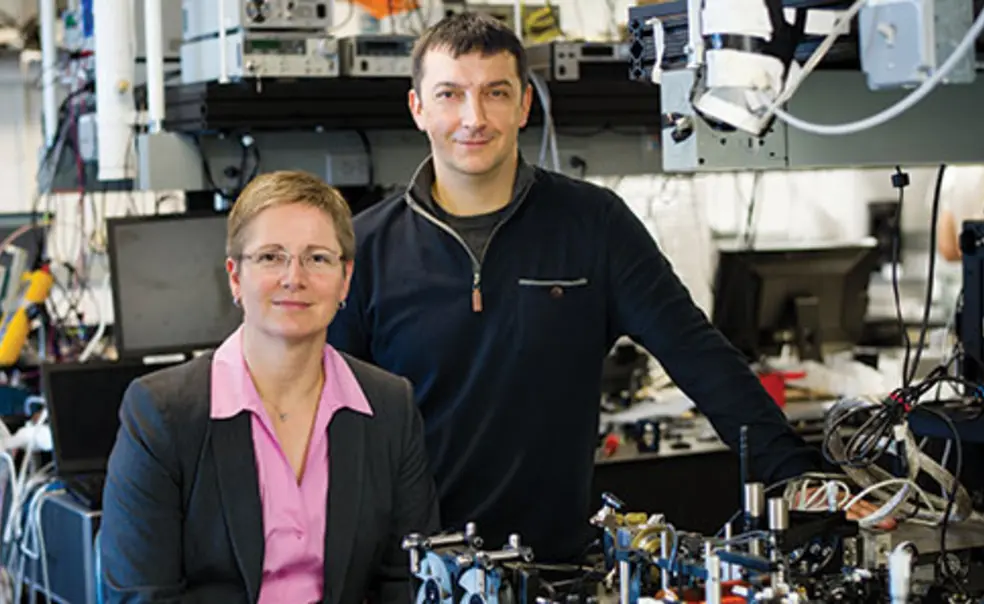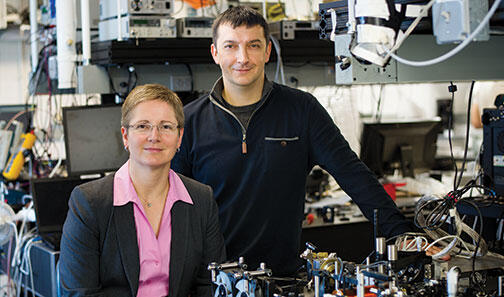Electrical Engineering: Healing Without Hurting
Lasers may provide a means for less invasive diagnosis and monitoring
This is a corrected version of an article from the Dec. 3, 2014, issue. The correction appears at the end of the story.
Two electrical engineering professors have developed laser devices that could make life easier for people with health problems. One may allow diabetics to monitor their condition without finger-pricks, and the second may provide better diagnosis of asthma and other inflammatory conditions.
A team led by Claire Gmachl has designed a laser-based device that measures blood sugar with a few quick, painless laser pulses through a person’s palm. It is easier and less invasive than current blood-glucose monitors used by diabetics, who often must check their blood several times a day. Almost 10 percent of Americans suffer from diabetes, and the number is on the rise.
Gmachl now is working to make the device smaller and more accurate. She wants “to make a sensor that is as accurate as what’s on the market now, but much more convenient, perhaps an attachment to an iPhone or tablet,” she says. She hopes it will be available in the next several years.
A second device, developed by Gerard Wysocki, tracks nitric oxide, which is difficult to measure in the body. High amounts of nitric oxide in a person’s breath can help diagnose asthma and other inflammatory conditions. The device passes a laser’s light through breath, urine, and blood samples to measure nitric-oxide levels throughout the body. Other detectors measure nitric oxide in blood or urine, but not the breath.
“The sensor we’ve developed is much more accurate and sensitive than existing systems, yet is far more compact and portable,” says Wysocki, who developed the device in 2012 and tested it at the Cleveland Clinic last year. He plans to shrink the device to the size of a desktop computer. The sensor also may be useful for clinical drug trials, enabling doctors to trace the path of a drug in the body with only a breath sample.
An earlier version of this story incorrectly described Professor Gerard Wysocki’s collaboration with Rice University researchers. That collaboration was on early proof-of-concept systems for atmospheric monitoring.













1 Response
Anonymous
9 Years AgoFor the Record
A Dec. 3 story on the development of a nitric-oxide sensor for medical diagnostics by Professor Gerard Wysocki incorrectly described his collaboration with Rice University researchers. That collaboration was on early proof-of-concept systems for atmospheric monitoring.